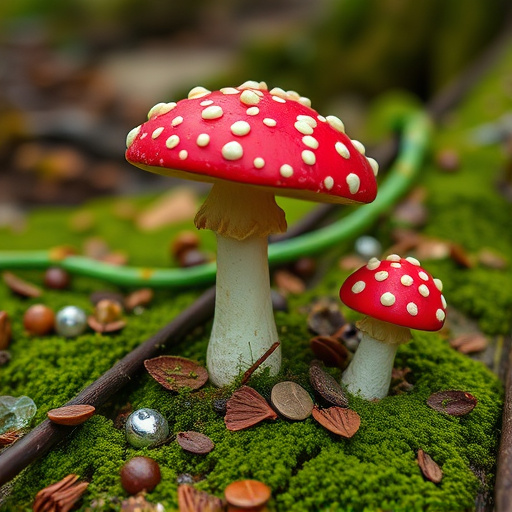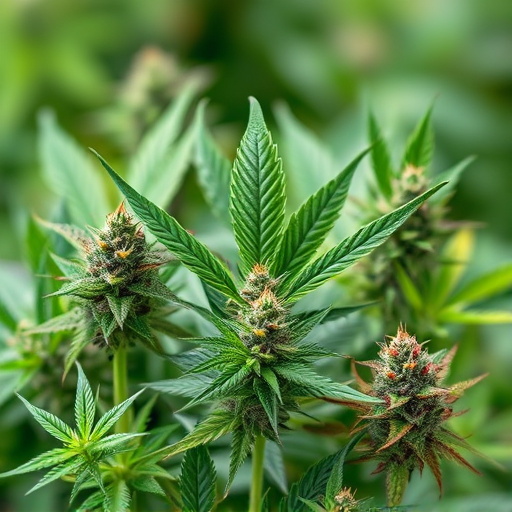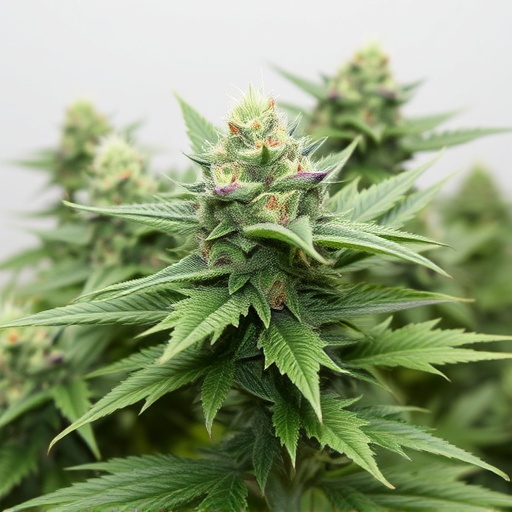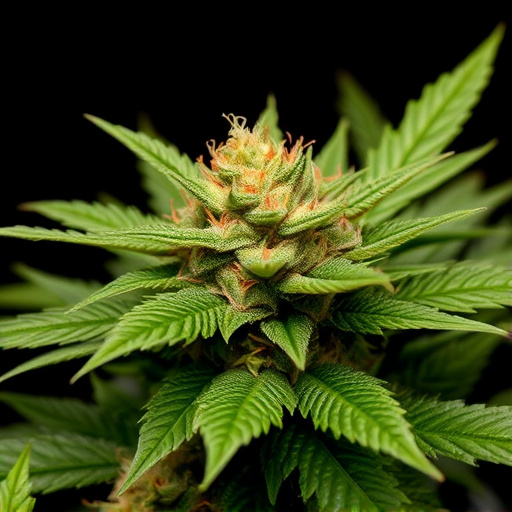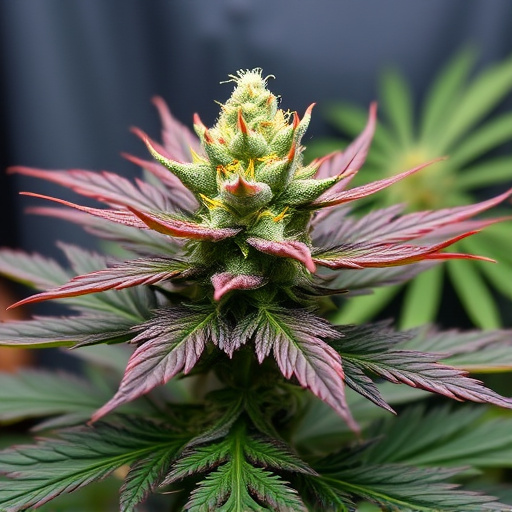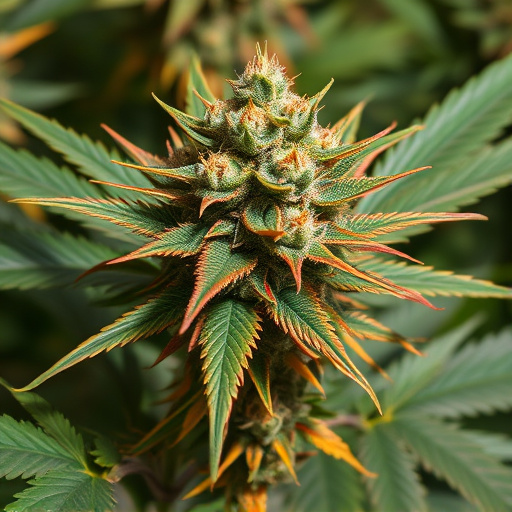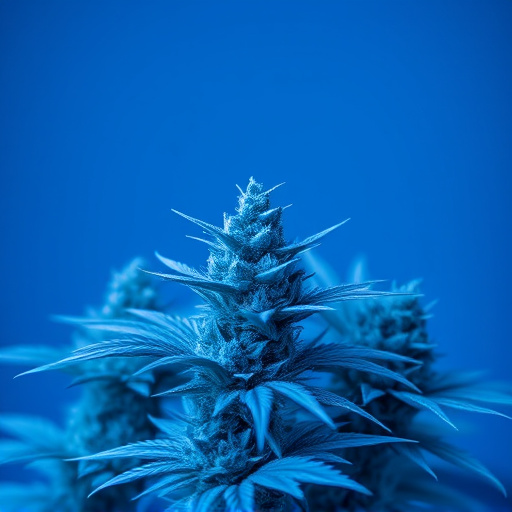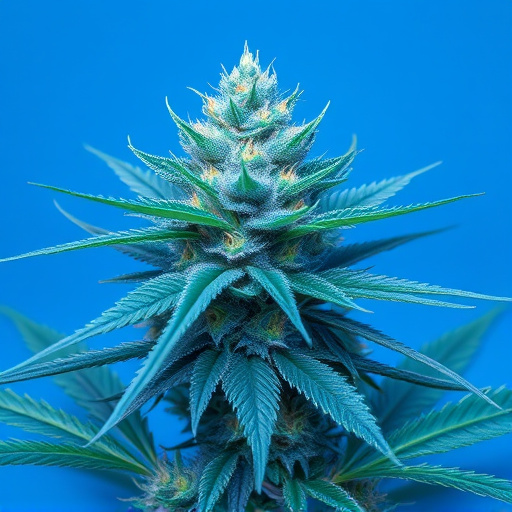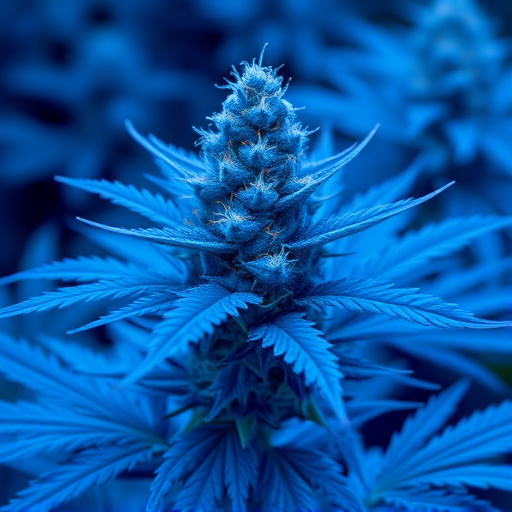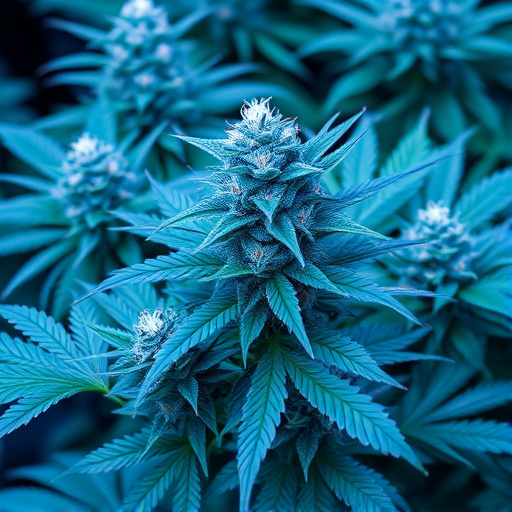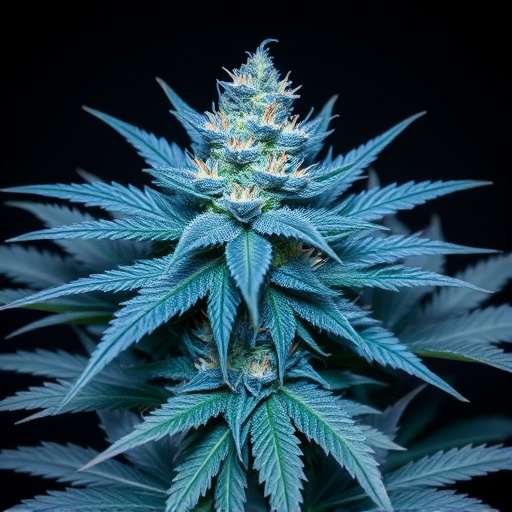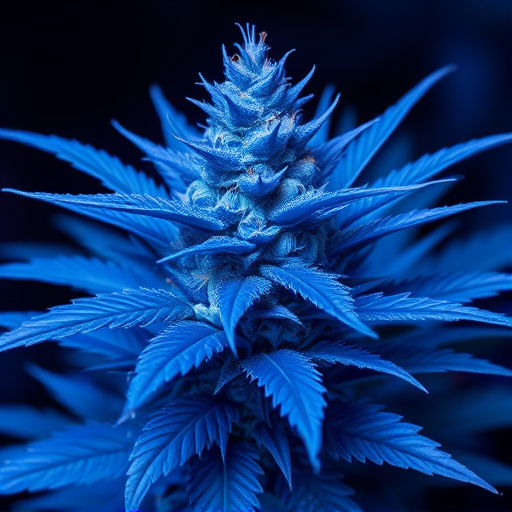The endocannabinoid system (ECS) regulates appetite, influenced by blue cannabis strains' cannabinoids like THC and CBD. High-THC strains stimulate hunger via CB1 receptors, a phenomenon known as "munchies," beneficial for eating disorders but also linked to weight gain. Lowering THC with higher CBD content may counteract hunger effects. Understanding ECS interaction with cannabis offers therapeutic potential for anorexia and cachexia while emphasizing the dual benefits and risks of blue cannabis strains in appetite management.
“Ever wondered why your appetite seems to surge after a good smoke? This phenomenon, commonly known as ‘the munchies,’ delves into the intricate relationship between our brains, bodies, and one particular plant—cannabis. In this article, we explore the science behind the munchies, focusing on the endocannabinoid system’s role in appetite regulation. We also shine a light on blue cannabis strains’ unique impact on hunger and cravings, revealing scientific insights that could have surprising health implications.”
- Understanding the Role of Endocannabinoid System in Appetite Regulation
- The Impact of Blue Cannabis Strains on Hunger and Cravings
- Scientific Insights into Munchies and Their Potential Health Implications
Understanding the Role of Endocannabinoid System in Appetite Regulation
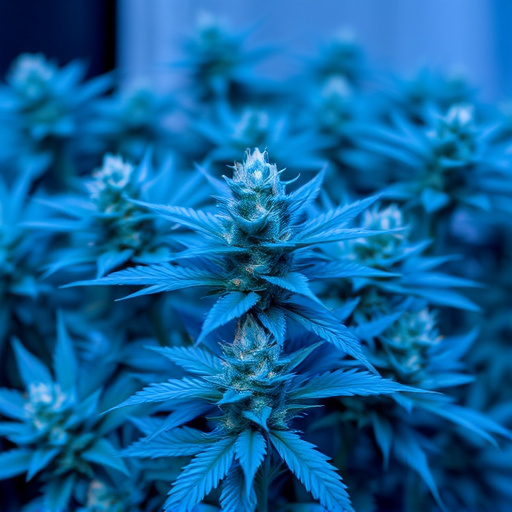
The endocannabinoid system (ECS) plays a pivotal role in regulating appetite and food intake, making it an essential aspect to understand when exploring the science behind the “munchies.” This intricate system is named after the cannabis plant, as researchers discovered its existence while studying the effects of cannabis compounds. The ECS consists of endocannabinoids, receptors, and enzymes that work together to maintain homeostasis in various physiological processes, including appetite control. When we consume cannabis, particularly blue cannabis strains known for their high THC content, it interacts with our ECS. THC binds to cannabinoid receptors, primarily CB1 and CB2, influencing various bodily functions, including stimulating appetite.
The activation of these receptors by endocannabinoids or exogenous compounds like THC can lead to increased hunger and food seeking, commonly recognized as the “munchies.” This effect is particularly noticeable in individuals with a history of reduced appetite or eating disorders. By understanding how the ECS modulates hunger signals, researchers are exploring therapeutic avenues for various conditions, including anorexia and cachexia, while also gaining insights into the potential benefits and risks associated with cannabis consumption.
The Impact of Blue Cannabis Strains on Hunger and Cravings
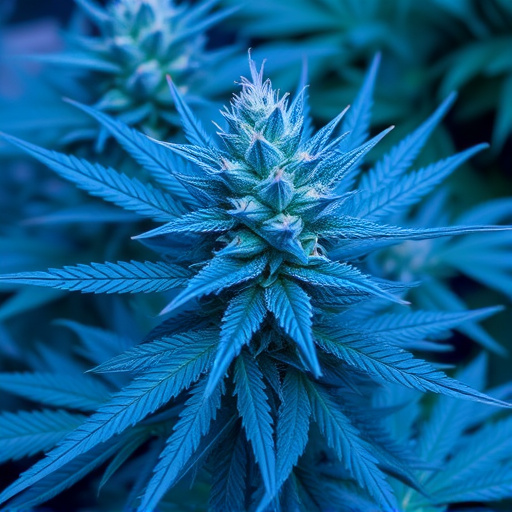
Blue cannabis strains have gained popularity for their unique effects, including potential impacts on hunger and cravings. Research suggests that certain cannabinoids present in these strains may influence appetite regulation. One prominent compound, tetrahydrocannabinol (THC), is known to stimulate the brain’s reward system, which can lead to increased feelings of hunger or “munchies.” However, some blue strains with higher levels of cannabidiol (CBD) may offer a different experience.
CBD is believed to counteract THC’s appetite-stimulating effects and could even promote satiety. Studies on animals have shown promising results, indicating that CBD might reduce food intake and body weight. This suggests that specific blue cannabis strains, rich in CBD and low in THC, could provide an alternative for individuals looking to manage their hunger cravings without the psychotropic effects of traditional THC-dominant varieties.
Scientific Insights into Munchies and Their Potential Health Implications
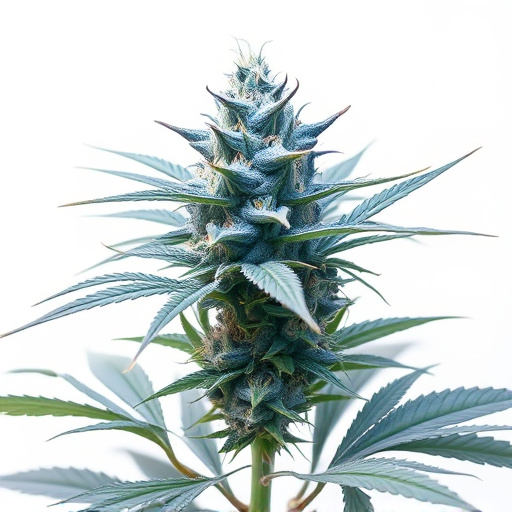
Scientific studies have shed light on the phenomenon known as “munchies,” revealing intriguing insights into its biological underpinnings. The urge to eat, particularly when induced by certain substances like cannabis, involves complex interactions between brain and body. Research suggests that blue cannabis strains, with their higher concentrations of THC, can stimulate appetite through various neurochemical pathways. When consumed, THC binds to receptors in the brain’s endocannabinoid system, which plays a key role in regulating hunger and pleasure. This activation can lead to increased cravings and a drive to consume food, hence the term “munchies.”
Moreover, these scientific insights have potential health implications. While moderate cannabis use may be associated with positive effects on appetite for individuals with certain medical conditions, excessive or regular consumption could contribute to unhealthy eating habits. Studies indicate that frequent users might be at higher risk of weight gain and metabolic disorders. Understanding the science behind munchies can empower individuals to make informed decisions about their cannabis consumption and overall dietary choices, striking a balance between reaping potential health benefits and avoiding adverse consequences.
In understanding the science behind the munchies, we’ve explored the intricate role of the endocannabinoid system in appetite regulation and discovered how specific blue cannabis strains can impact hunger and cravings. Scientific insights into the “munchies” reveal both potential health implications and challenges, underscoring the importance of responsible consumption and further research. As we navigate this evolving landscape, recognizing the complex interplay between cannabis and our bodies, we can foster a more informed approach to its use.
